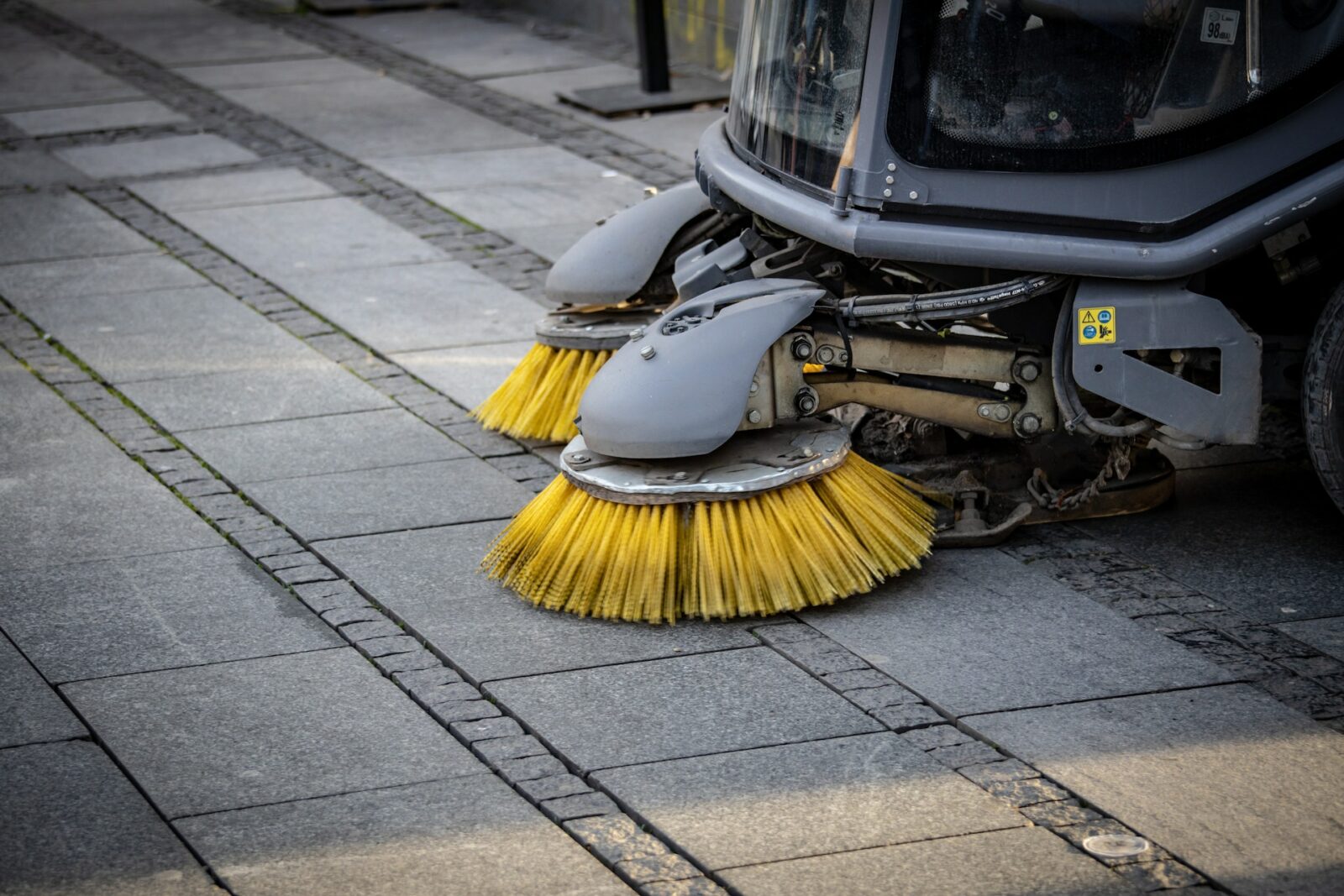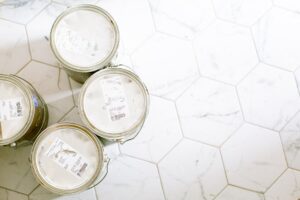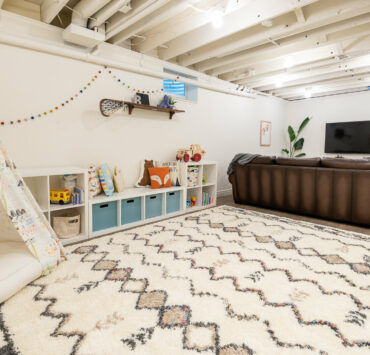Cleaning concrete basement floors is just as important a task as any when it comes to cleaning the floors in your home. As with any floor, there are a few things to keep in mind when cleaning concrete. In this article, we provide some tips and guidelines for cleaning concrete basement floors safely and effectively. Knowing how to clean concrete floor in basement will help you get the job done in the best way.
[ez-toc]What To Know About Concrete Floors
Yes, concrete is a sturdy material. But when cleaning concrete floors, it’s important to use the right methods and products to avoid damaging the concrete.
Concrete is porous so it can easily be stained and damaged by harsh chemicals, abrasive cleaning and too much water. Due to its porous surface, it is also prone to staining. Tough as concrete is, keep all this in mind as you go about cleaning it.
Lastly, before proceeding to clean your concrete floors, know if your concrete floor is sealed or unsealed. Sealed concrete gives your concrete a non-porous and top layer which makes it more stain-resistant. There’s also more room for harsher cleaning methods.
Concrete Floor Cleaning Methods
Sealed Concrete Floors
To clean sealed concrete floors, which are non-porous and resistant to most stains, you’ll need a broom, vacuum, or dust mop, as well as dishwashing liquid, a bucket, and a wet mop.
Start by removing surface dust and debris by sweeping, vacuuming, and dust mopping the floor to prevent scratches from gritty dirt. Once the dust has been removed, mop the floor.
Use a cleaning solution of water and a squeeze of dishwashing liquid. Make sure to rinse your mop thoroughly to avoid leaving streaks.
Allow the basement floor to air dry completely. You can speed up the process by turning on a dehumidifier or running a dry towel to absorb the leftover moisture.
If you’re dealing with a particularly dirty sealed concrete floor, repeat the cleaning process until you’re satisfied.
Polished Concrete Floors
To clean polished concrete floors, you’ll need a broom, vacuum, or dust mop, along with a commercial polished concrete cleaner and a wet mop.
Start by removing surface dust and debris with a dust mop or vacuum. When the floor is soiled with dirt or spills, use a damp mop with a commercial polished concrete cleaner that is pH-neutral. Most of these cleaners don’t require rinsing, but always read the product directions to make sure.
Don’t use abrasive cleaners or tools on polished concrete, as they can damage the finish.
Painted Concrete Floors
To clean painted concrete floors, you’ll need a broom, vacuum, or dust mop, along with a mild all-purpose cleaner, a bucket or sink, and a microfiber mop.
Start by removing surface dust and debris with a dust mop or vacuum. Next, mix a cleaning solution of warm water and an all-purpose cleaner, and use a microfiber mop that is only slightly damp with the solution to clean the floor. Avoid using excessive moisture, which can break down the paint and cause it to peel.
Rinse the floor thoroughly with plain water to remove any soapy residue, then air-dry the floor or use a soft, clean towel to dry it. Don’t use harsh or acidic cleaners that may damage the paint or sealant.
Unsealed Concrete Floors
To clean unsealed concrete floors or exterior concrete, you’ll need a stiff-bristled broom or shop vac, rubber gloves, trisodium phosphate, and any necessary stain removers. A pressure washer is optional, but the job can be completed with a standard hose or a bucket of water.
Start by removing surface dust and debris with a broom or shop vac. Then, pressure wash or scrub the concrete with a solution of trisodium phosphate and water, using rubber gloves and following the product’s mixing instructions.
If you don’t have a pressure washer, wet the concrete with a garden hose and use a stiff-bristled brush to distribute the cleaning solution, then scrub the debris away. Once you’ve cleaned the concrete, rinse it thoroughly to remove the cleaning solution, and allow the area to air dry fully.
This may take about three hours, depending on the sun exposure.
Dealing With Stains
To remove stains from unsealed concrete floors, use the following methods accordingly.
For grease stains, sprinkle the stained area with cornstarch or cat litter and let it sit for at least three days to absorb the oil. Vacuum away the powder, and repeat if necessary. Wipe the area clean with a damp microfiber cloth afterwards.
For food and beverage stains, mix 2 tablespoons of dishwashing liquid with 1 quart of water and scrub the stain with a stiff brush. Rinse well with plain water and dry thoroughly.
For skid marks, wet the area first, then spread a degreaser over the stains. Let the cleaner work for approximately 4 hours before scrubbing it with a stiff brush. Rinse well and dry thoroughly.
For rust stains, pour white vinegar on the stains and let it work its dissolving magic for at least 30 minutes. Scrub the stain with a stiff brush and rinse. For large, dark stains, use a commercial rust remover that contains oxalic acid.
For mold and mildew stains, mix 2 tablespoons of powdered laundry detergent, 2 tablespoons of trisodium phosphate, and 1 quart of water. Scrub the mildewed area with a stiff-bristled brush and the cleaning solution. Rinse well and dry thoroughly.
On a side note, if you’ve cleaned mold and mildew off your floor, check the rest for your basement to address any unseen growth.
For heavy stains, use a chlorine bleach and water solution instead. Mix 1 cup of bleach per gallon of water and scrub the area with a stiff brush before rinsing.
Safety Precautions
It is important not to mix bleach with other cleaners, as the combination can be toxic for you. When using bleach to clean concrete, make sure to wear protective clothing, as bleach stains cannot be removed.
Also, only use bleach in your basement when absolutely necessary. Wear a mask and maximize the air flow as much as you can. This should protect you from the fumes and prevent or lessen any nausea that comes with using bleach in enclosed areas.
Consider A Sealant
To make your concrete floors resistant to future stains and to keep them clean more easily, apply a concrete sealant. Use a paint roller to apply it to clean, primed concrete. Start in the middle and roll out to the edges. This DIY-friendly task should pay off well as it makes your concrete easier to clean and maintain. Applying a sealant will also help your concrete to last longer and lessen damage.
When it comes how to clean concrete floor in basement, there’s no reason to overcomplicate the matter. As a general rule, a good vacuum and mild cleaning solution will get the job done well. As long as you don’t oversaturate your concrete floor or use harsh cleaning methods, you can clean your concrete basement floor without damaging it.








